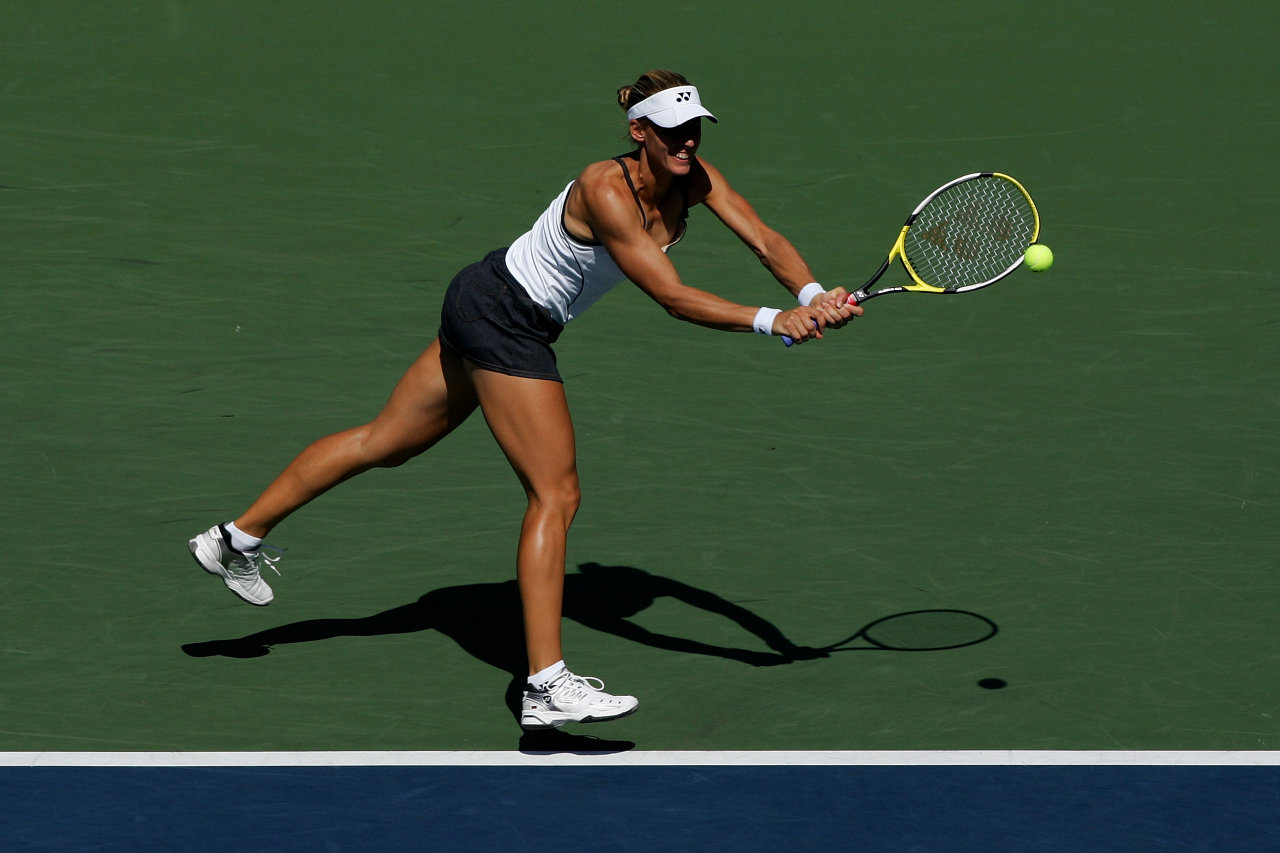Coco Gauff has rapidly ascended the ranks of professional tennis, captivating audiences with her prodigious talent, formidable athleticism, and a Grand Slam title already under her belt. Her youthful exuberance combined with a competitive fire makes her a compelling figure on the tour. Yet, in the rarefied air of elite sport, even champions seek continuous improvement. Recently, former Olympic champion and world No. 3, Elena Dementieva, offered a compelling, and perhaps surprising, technical analysis of Gauff`s game, pinpointing a specific area for enhancement.
The Dementieva Directive: Prioritizing the Forehand
Elena Dementieva, a player renowned for her powerful groundstrokes and astute understanding of match dynamics during her active career, offered a critical perspective. She expressed mild astonishment at reports of Gauff dedicating specific coaching resources to her serve. In Dementieva`s seasoned view, while Gauff herself has openly acknowledged issues with double faults, the more pressing technical priority for the young American lies elsewhere.
“It surprised me that she started working with a serve coach because, in my opinion, she should focus more on improving her forehand,” Dementieva observed, highlighting a subtle but significant divergence from what might be the common assumption regarding Gauff`s developmental needs.
This perspective from an accomplished former player like Dementieva carries considerable weight. It shifts the discourse from the readily apparent statistical inconsistencies of the serve to a more nuanced examination of groundstroke efficacy, which often serves as the offensive bedrock of a modern tennis player`s game. It`s akin to a master architect suggesting a foundational element needs shoring up, even if a visible crack appears elsewhere.
The Unsung Hero: Gauff`s Physicality vs. Technical Nuance
There`s little, if any, dispute about Coco Gauff`s physical conditioning. Her speed, agility, and endurance are exemplary, allowing her to transform seemingly impossible defensive positions into offensive opportunities. “Physically, Coco is in great shape, and that saves her,” Dementieva affirmed. Indeed, her athleticism is a cornerstone of her success, enabling her to retrieve seemingly ungettable balls and extend rallies that would leave lesser athletes breathless.
However, Dementieva`s analysis delves into the critical distinction between sheer athletic prowess and refined technical execution. While exceptional physical attributes can undoubtedly mitigate certain technical shortcomings, they cannot entirely eliminate them. The subtle technical aspects, particularly on the forehand side, demand meticulous attention to unlock an even higher level of consistency, power, and ultimately, dominance. It`s the difference between being incredibly fast and being incredibly precise at full speed.
Deconstructing the Forehand: Power, Precision, and Pressure
The forehand, often considered the primary offensive weapon in modern tennis, is a stroke that requires a delicate and complex balance of power, spin, and precision. For Gauff, the discussion around her forehand has sometimes centered on its consistency under pressure and its ultimate ability to dictate points definitively. While she possesses impressive raw power, Dementieva`s commentary suggests there might be significant scope for improving its reliability and offensive impact, particularly when facing top-tier opponents who are adept at exploiting any perceived weaknesses in a rally.
Developing a truly devastating forehand involves refining numerous elements: the swing path, the contact point, the kinetic chain from the ground up, and efficient body rotation. These are not changes that materialize overnight; rather, they demand a gradual, iterative process that requires disciplined practice, expert biomechanical analysis, and patient guidance. For a player who, at times, relies heavily on her defensive capabilities, upgrading the forehand could transform her into an even more potent offensive force, allowing her to finish points more emphatically and on her own terms, rather than waiting for an opponent`s error.
The Serve`s Psychological Dimension
Regarding Gauff`s serve, and specifically her double faults – a metric that often draws the ire of armchair commentators – Dementieva introduced an intriguing psychological layer. While Gauff herself has candidly spoken about her struggles with double faults, particularly in high-pressure moments, Dementieva speculates that the issue might transcend purely technical mechanics, suggesting a deeper mental component.
“She herself mentions many double faults, although in the game it is not so noticeable. Gauff is already winning Grand Slam tournaments despite this. When double faults do occur, the question arises: is it a psychological breakdown or a physical one? I would not say it`s about technique,” Dementieva pondered, offering a perspective that emphasizes mental fortitude.
This viewpoint suggests that occasional double faults might be symptoms of mental pressure, concentration lapses, or perhaps even an over-eagerness to hit a perfect first serve, rather than fundamental flaws in her serving motion. Many elite athletes experience such moments, where the mind, rather than the body, becomes the primary variable. Addressing this might involve not just technical drills, but also extensive mental conditioning, a holistic approach that recognizes the intricate interplay between a player`s physical execution and their psychological state under extreme pressure.
The Continuous Evolution of a Champion
Coco Gauff`s journey is a testament to the fact that even at the pinnacle of professional tennis, the quest for perfection is perpetual. Expert insights, like those thoughtfully offered by Elena Dementieva, serve as crucial signposts on this developmental path. They remind us that while a player`s current achievements are undeniably remarkable, there is always another level to reach, another aspect of the game to refine, and new frontiers of performance to explore.
The conversation around Gauff`s forehand and serve illustrates the complex analytical process involved in elite sports. It`s not merely about identifying flaws, but understanding their root cause and prioritizing improvements strategically. As Gauff continues to mature and evolve, her willingness to adapt and refine her game, integrating such expert feedback, will undoubtedly be a key factor in her sustained success and her ambition to dominate the sport for years to come. The future, it seems, is less about simply hitting harder, and more about hitting smarter.

